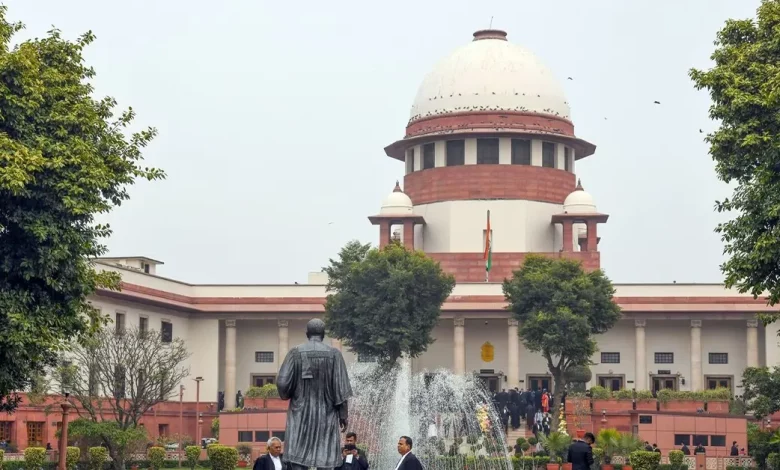SC’s Inquiry into Amending the Preamble
GS Paper 2 - Indian Constitution and its Historical Underpinnings

Context – A public interest litigation filed by former Rajya Sabha MP Dr. Subramanian Swamy seeks to delete the words “Socialist” & “Secular” from the Preamble to the Constitution of India. The case questions the validity of the insertion of these words via the 42nd Constitution Amendment of 1976 during Prime Minister Indira Gandhi’s tenure. It argues that the amendment was beyond the amending power of the Parliament under Article 368.
Why discuss Preamble?
- Original Draft: The Preamble was accepted on 26 November, 1949 by the Constituent Assembly of India that responded for the basic purpose and the fundamental principle of the Constitution.
- 1976 Amendment: The Socialist and Secular terms were embedded into the Preamble of the Constitution by the 42nd amendment, therefore changing its original declaration.
- Legal Implications: The insertion is examined over whether it is legal and consistent with constitutional principles.
Amending the Preamble
- Judicial Inquiry: In the hearing the judge Justice Datta made a comment on the amendability of Preamble. He wondered if the Preamble could have been ” amended earlier ( by the 42nd Amendment Act in 1976) to add the words Socialist and Secular, even keeping the date of adoption ( November 29, 1949).
- Discussion on Academic Grounds: The Judge explained that counsel ought to academically analyze the possibility of revising the Preamble while preserving its original adoption date.
- Historical Context: The Judge Datta emphasized that the Preamble, which is unique for dated adoption, underwent the changes; however the most important amendment was “Socialist” and “Secular” insertion.
- Legal Challenge: The petition questions the constitutionality of the insertion contending that it runs counter to the original intent of the Constitution and weakens citizens’ right to determine their political beliefs.
- Kesavananda Bharati Precedent: The inquiry however, makes reference to the landmark Kesavananda Bharati case of 1973 where the SC held that the Preamble was an integral part of the Constitution and was subject to amendment provided it didn’t violate the Constitution’s basic structure.
Addition of ‘Socialist’ & ‘Secular’
- The 42nd Amendment: During the Emergency imposed in 1976 by Prime Minister Indira Gandhi, the wordings “socialist” and “secular” were inserted in the Preamble by The Constitution (42nd Amendment) Act, 1976.
- Indira Gandhi’s Agenda: Gandhi’s government set out to portray India as a socialist and pro-poor country; this was in line with the slogans like “garibi hatao” (poverty eradication) that it used. With socialism being added, the Indian state acknowledged socialism as the fundamental objective.
- Distinctive Indian Socialism: The Indian version of socialism did not advocate for total nationalization but advocated for selective nationalization of essential sectors.
Understanding ‘Secular’
- Religious Diversity: Variety of religious beliefs and practices is prevalent in India. The inclusion of the word “secular” in the Preamble was to create a bond and brotherhood among the followers of diverse religions.
- State Neutrality: Secularism in the Indian context means that the state remains neutral and impartial to all religions. It does not support any religion as a “a state religion.”
- Secularism as Law: The provisions of Articles 25-28 of the Indian Constitution reinstate the secular nature of the Indian state.
- Inherent in the Constitution: Secularism was in the philosophy of the Constitution even before the 42nd Amendment.
Disputes surrounding Socialist and Secular
- Consensus on Secularism: Secularism was present in the philosophy of the Constitution. “Secular” was introduced into the Preamble and merely made the implicit explicit in the several provisions.
- Constituent Assembly Discussions: The Constituent Assembly debated adding these words in the Preamble but did not.
- Dr. B. R. Ambedkar’s Perspective: Dr. B. R. Ambedkar stressed that the policy, administration, and economy sides should be decided by the citizens as to how the Constitution should be imposed.
Conclusion
The Supreme Court should be looking to balance the Constitution’s core values and the power between Parliament and Judiciary. The matter raises the question regarding the scope of the amending powers of the Parliament and the preservation of constitutional integrity. Any decision made by the Supreme Court should not dial down the very fabric of the principles of the Constitution.
SOURCE: The Indian Express





.png)



